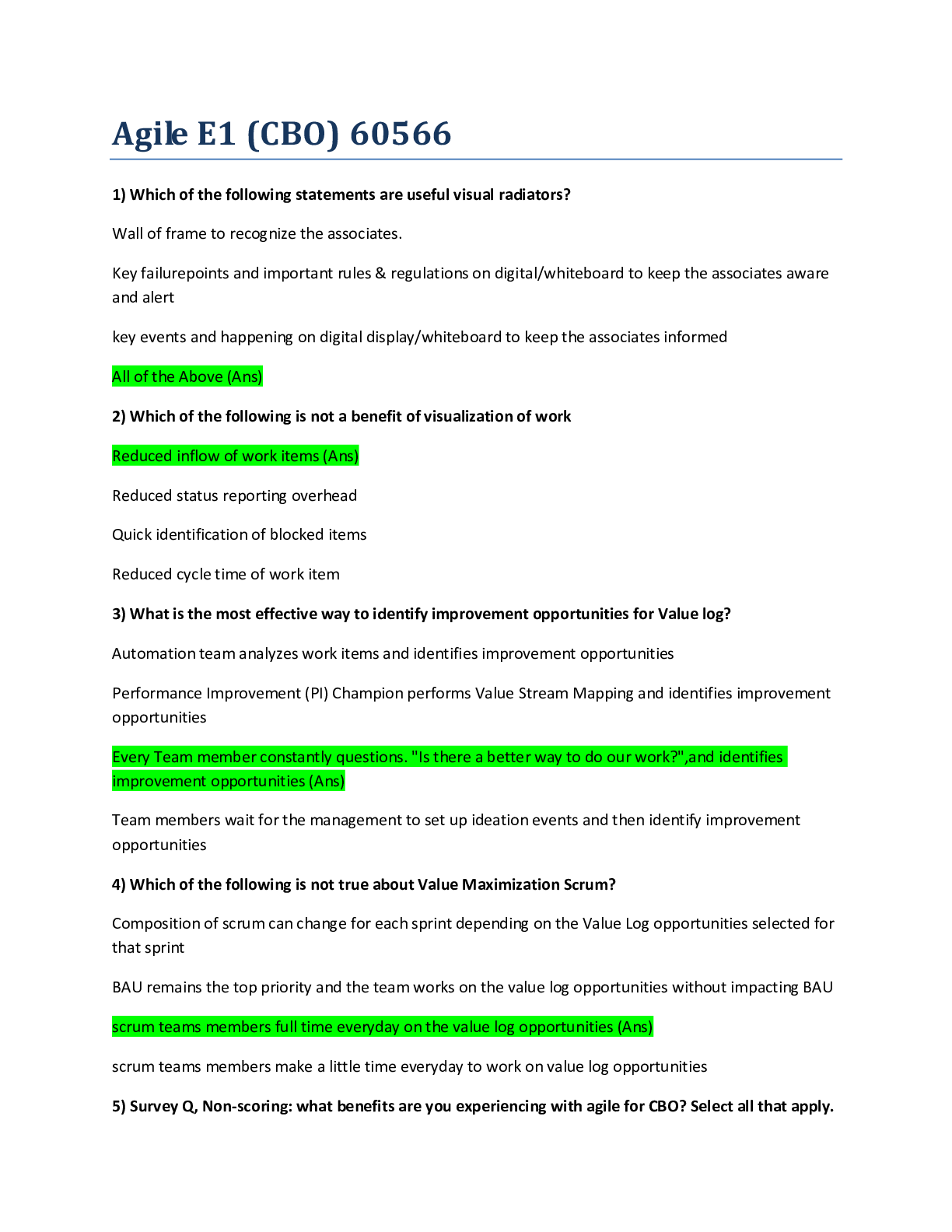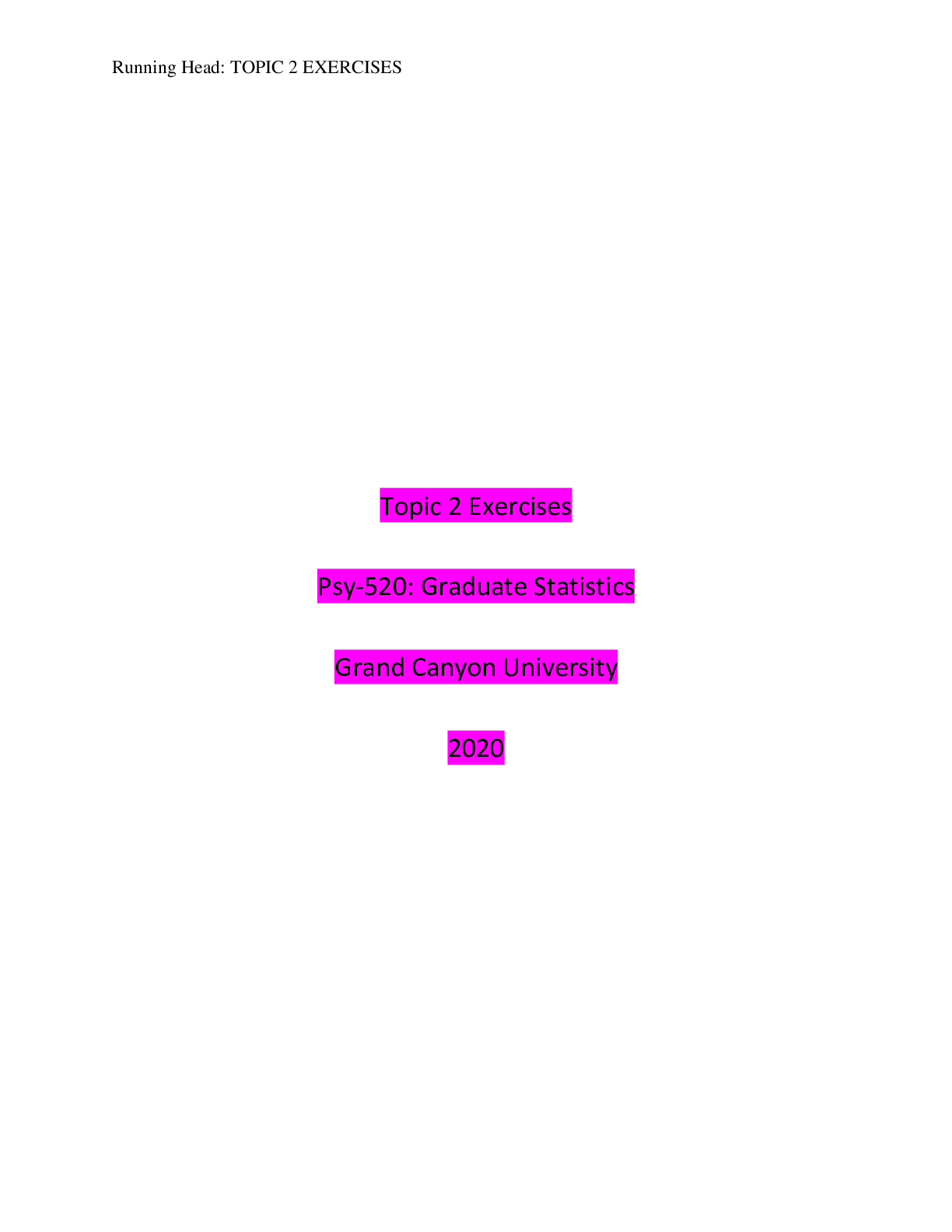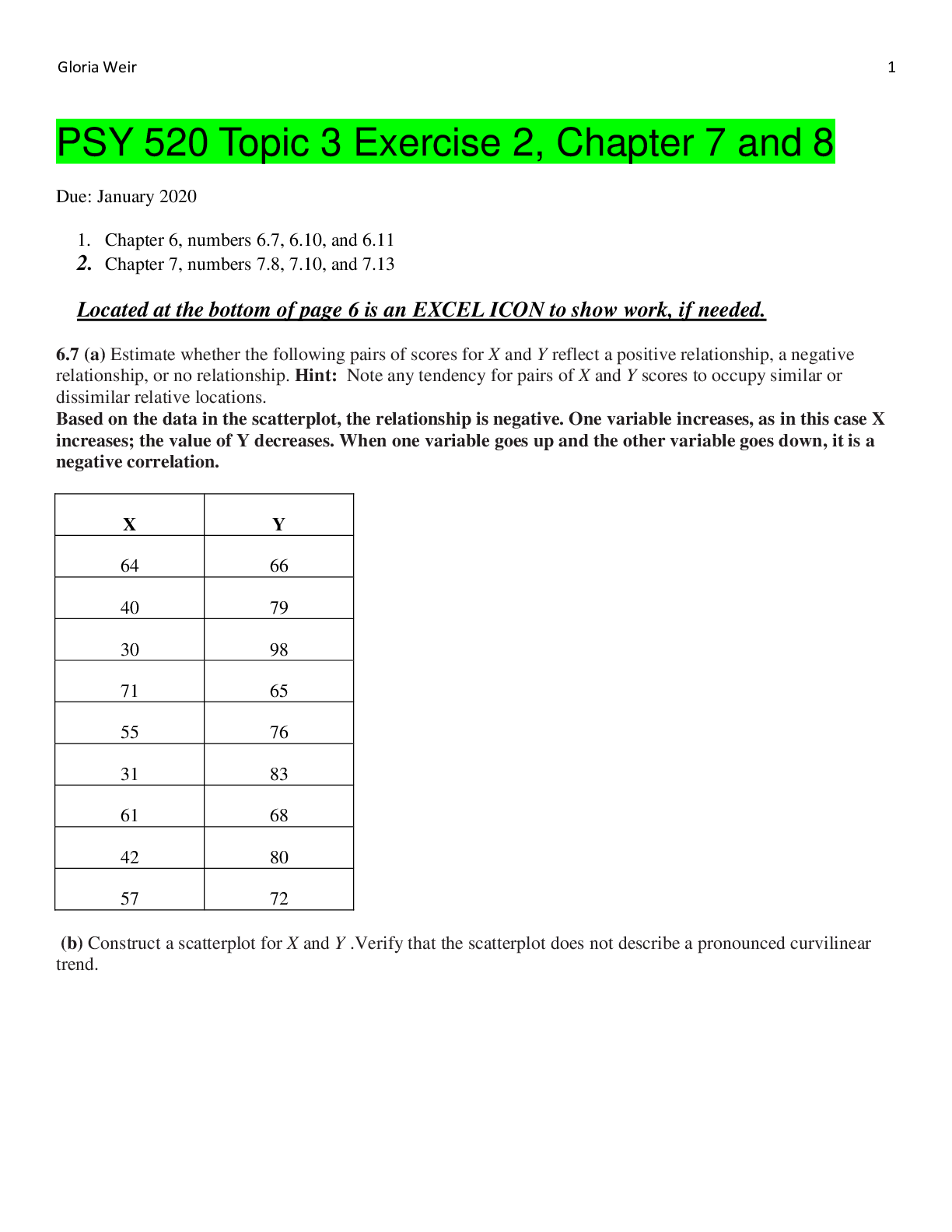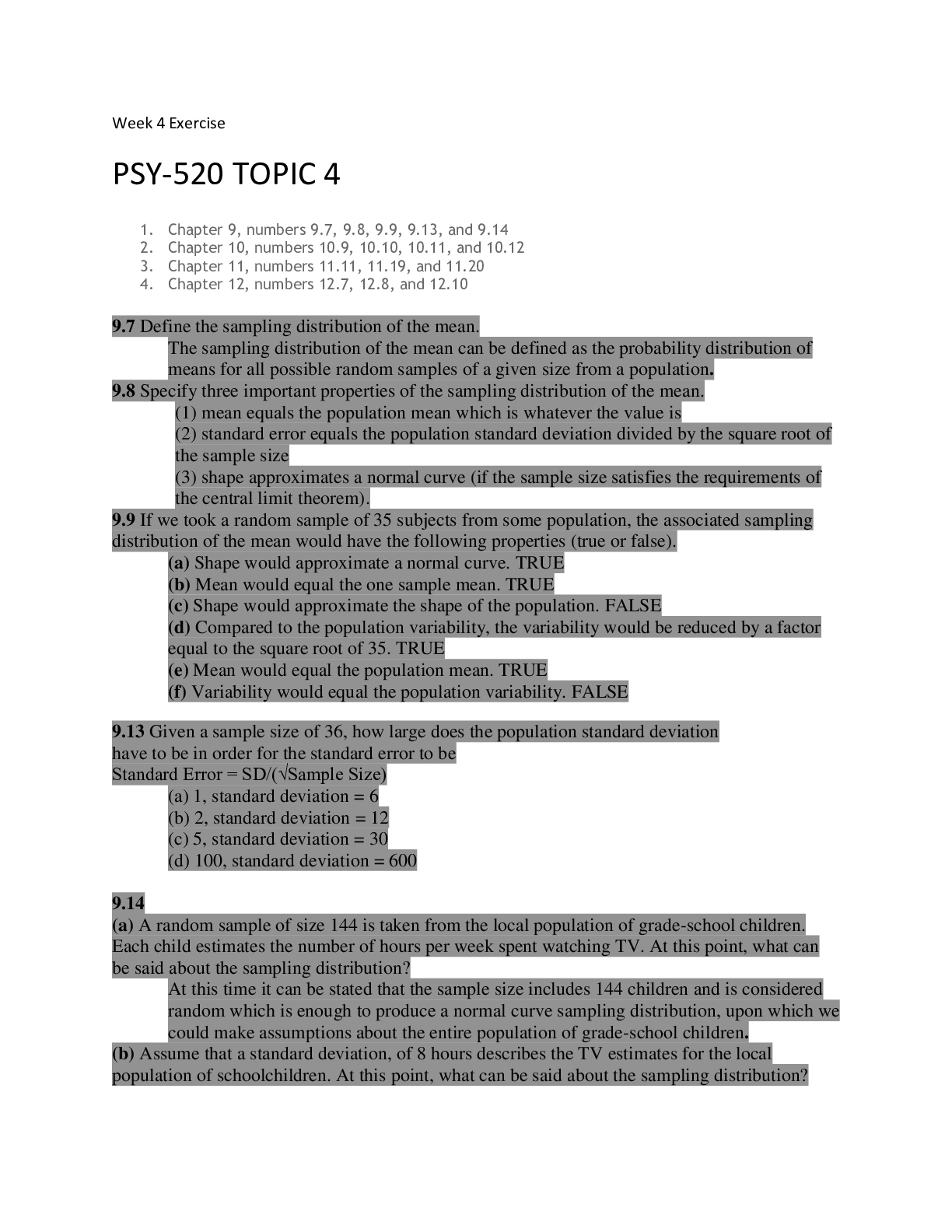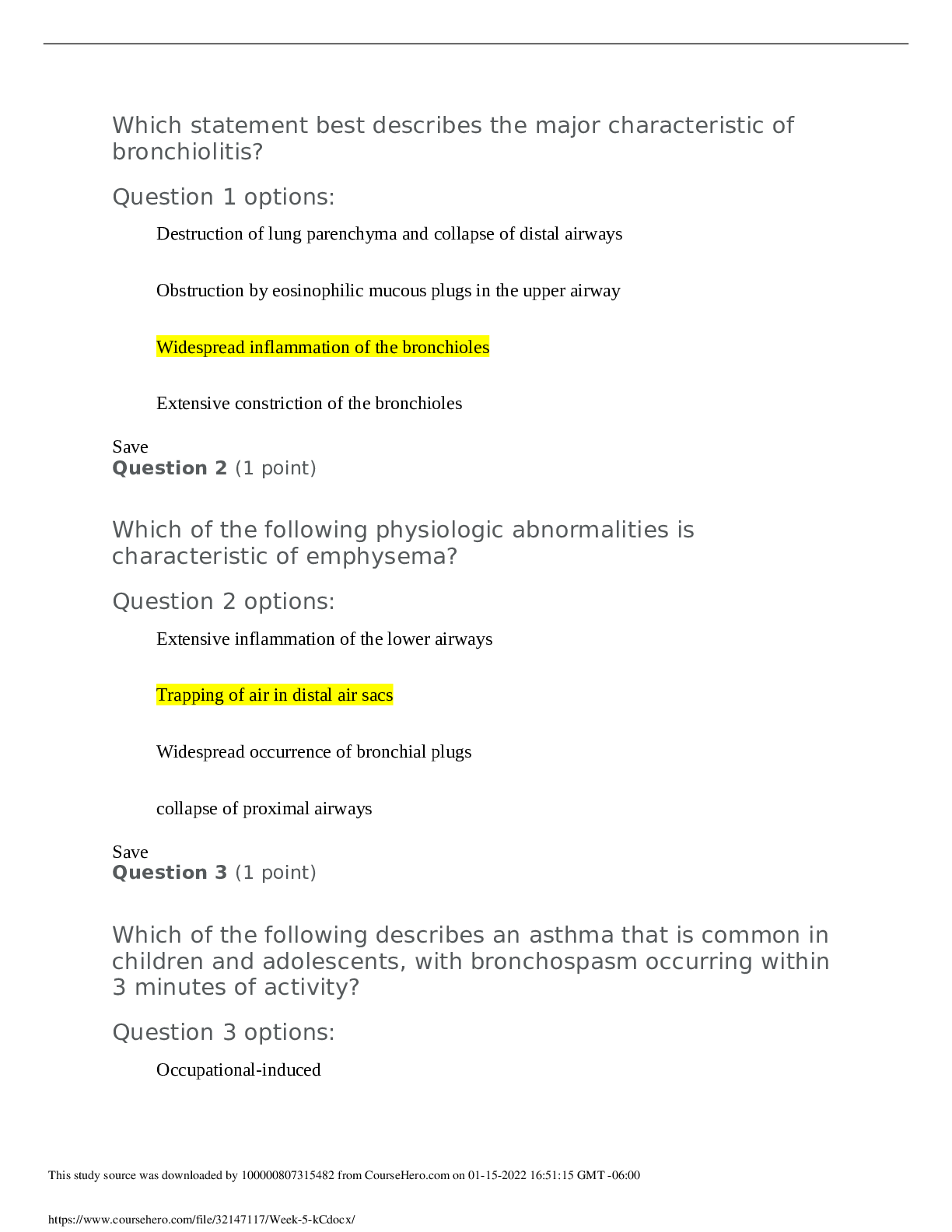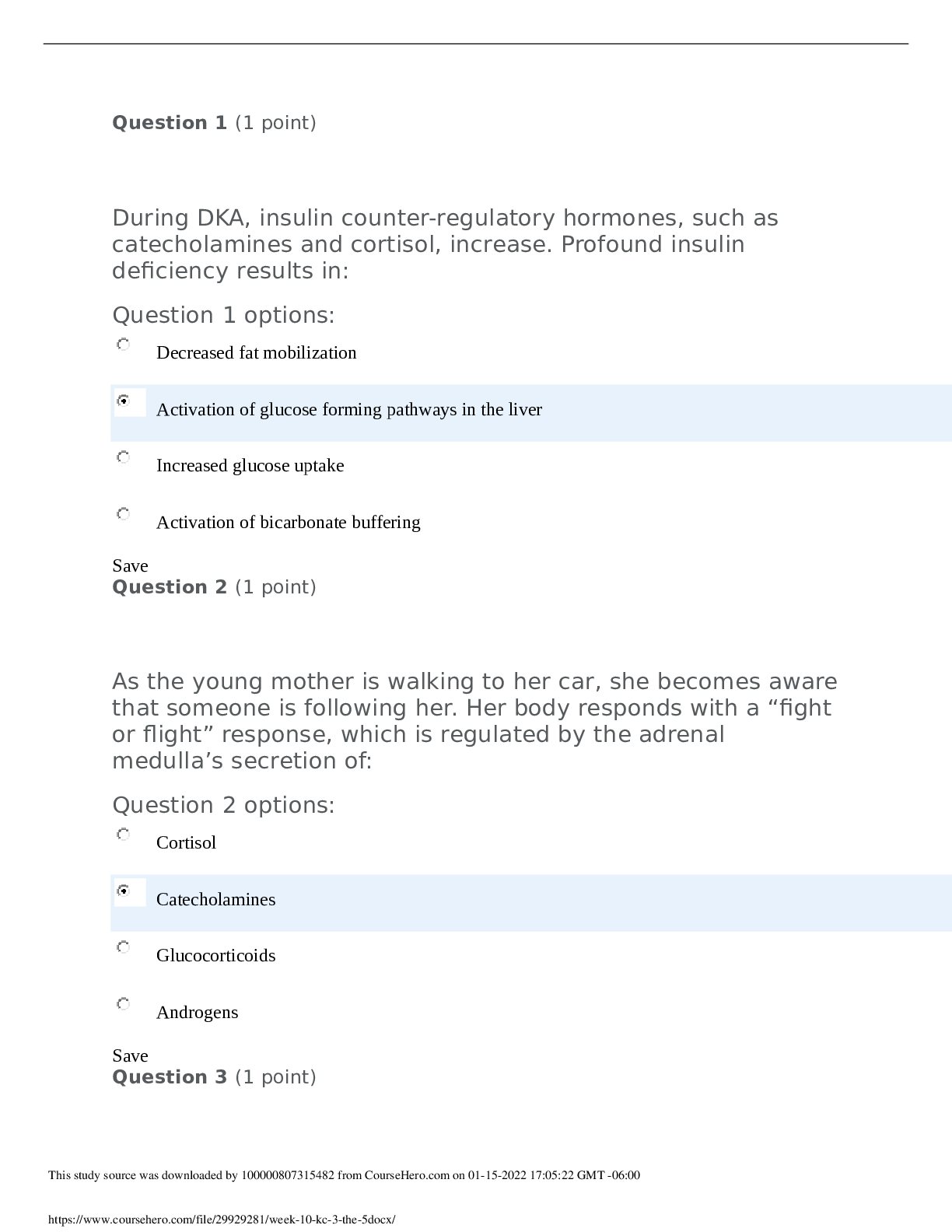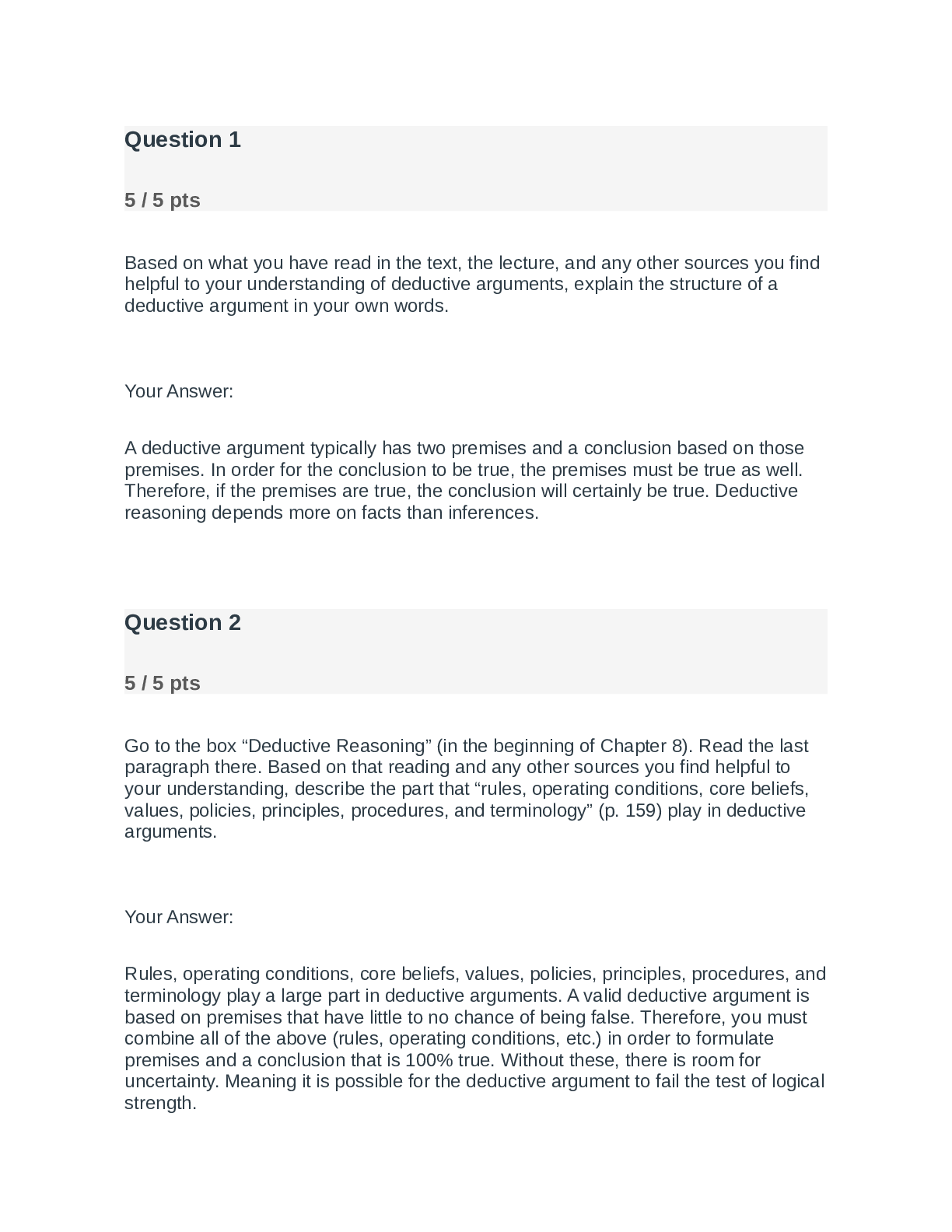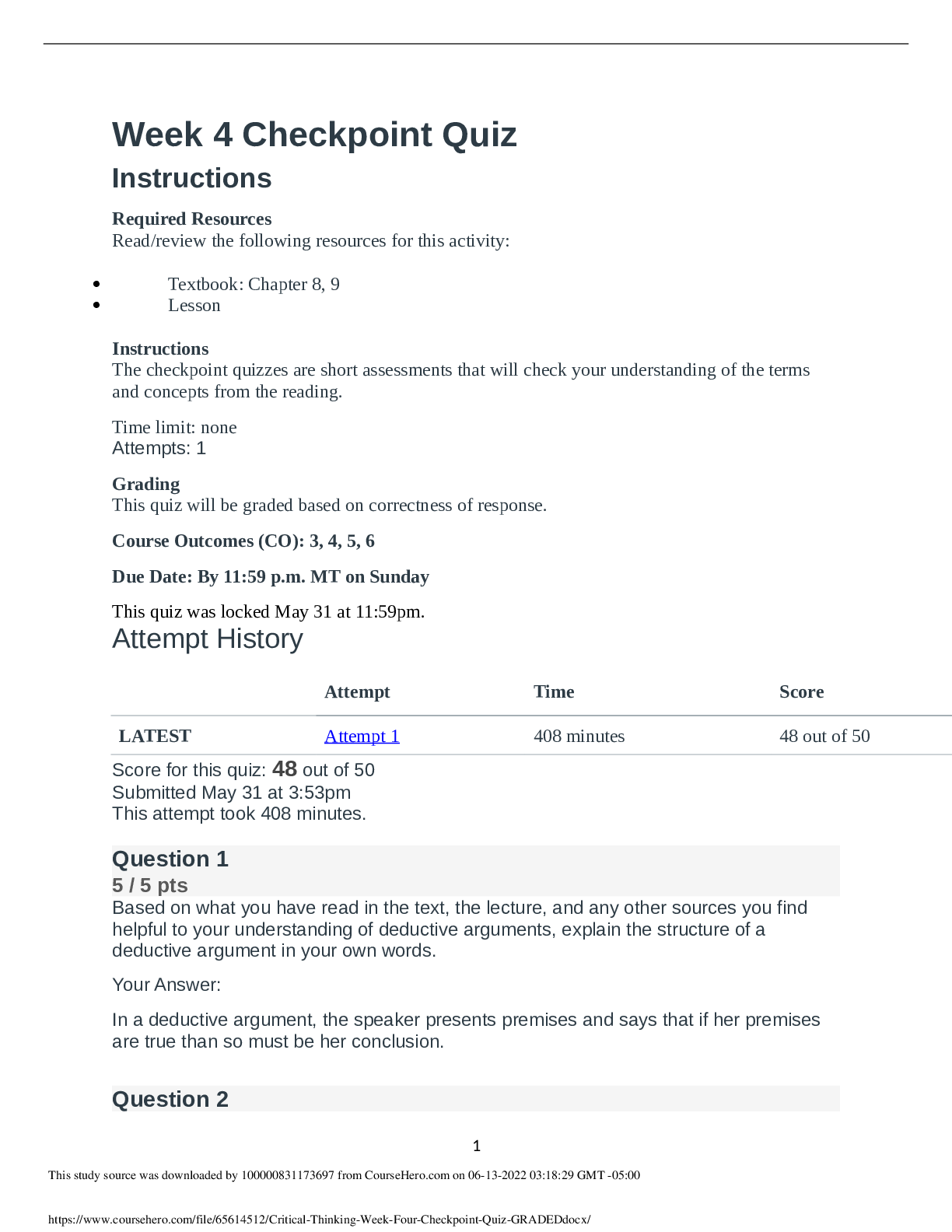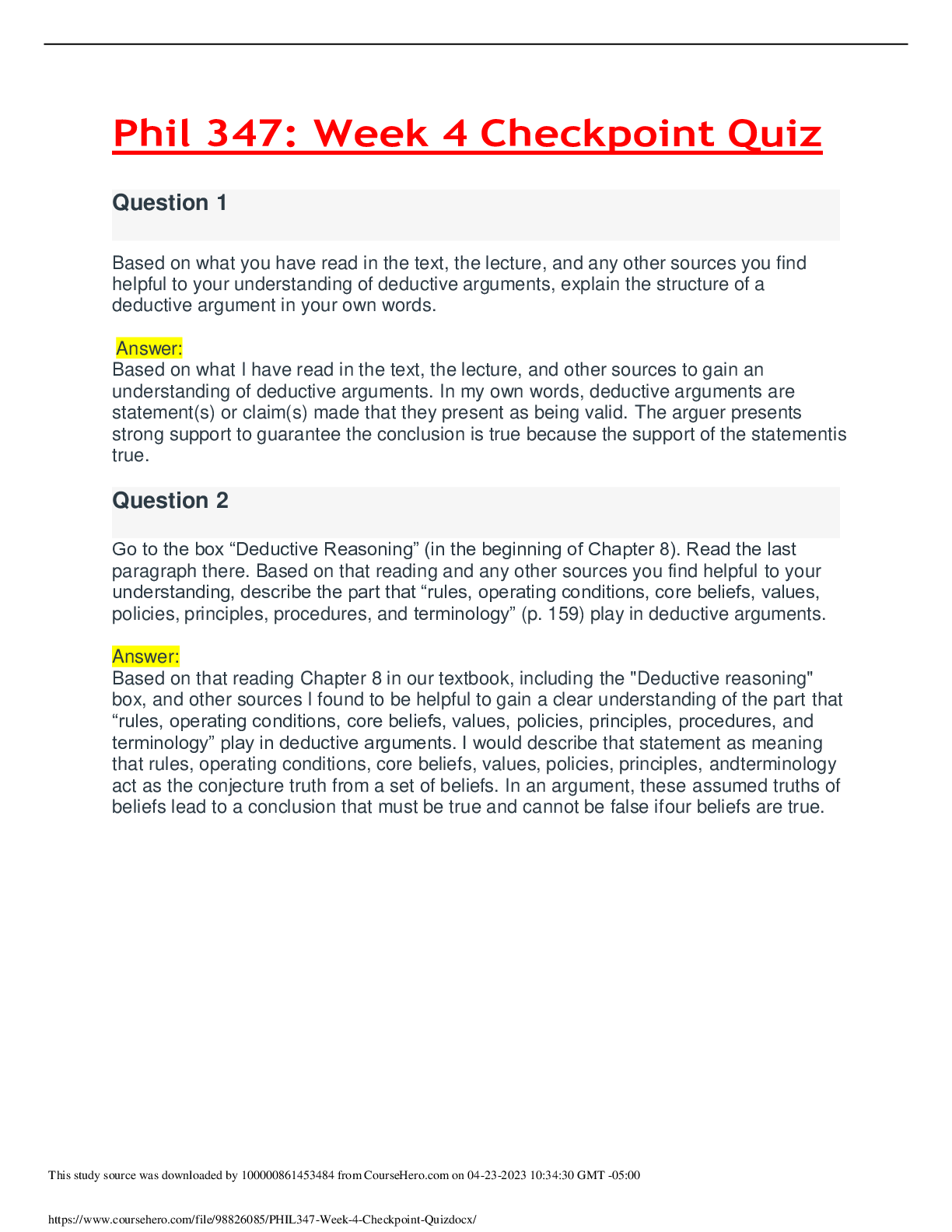Philosophy > QUESTIONS & ANSWERS > PHIL 347N Week 4 Checkpoint (All)
PHIL 347N Week 4 Checkpoint
Document Content and Description Below
Based on what you have read in the text, the lecture, and any other sources you find helpful to your understanding of deductive arguments, explain the structure of a deductive argument in your own wor... ds. Go to the box “Deductive Reasoning” (in the beginning of Chapter 8). Read the last paragraph there. Based on that reading and any other sources you find helpful to your understanding, describe the part that “rules, operating conditions, core beliefs, values, policies, principles, procedures, and terminology” (p. 159) play in deductive arguments. In the introduction to Chapter 8, the text sets forth a specific definition of the term “valid” as it applies to deductive arguments. What is that definition? Use the following template to create a valid Denying the Consequent argument example: If_________________ then _______________ It is not the case that ______________________ Therefore, it is not the case that ________________ Use the following template to create a valid Affirming the Antecedent argument example: If_______________ then____________ ________________________________ Therefore _______________________ Jack says: “I can enroll full time this semester, or I can buy a car. I think going to school full time is the better option for me, so I’ll have to put off buying car.” What name does the text give to this argument structure? n addition to if/then and either/or, there are other terms that, when used correctly, can create valid argument templates. Using the three deductive statements below, create five (5) valid deductive arguments. To make your life easier, you can use the key words at the end of the statement to fill in the template. Statement A: Tuition increases 5 percent per academic year. (Tuition increases) Statement B: I must graduate in no more than two years. (Graduate two years) Statement C: I have legal access to unlimited amounts of cash. (Unlimited cash) Example: For a template such as “Either A or B. Not A. Therefore B” you would answer: “Either tuition increases, or I graduate in two years. Tuition will not increase. Therefore, I will graduate in two years.” Do this for all five templates. Templates • Either A, B, or C. Not C. So, A or B. • It is not the case that both A and B are true. So, either A is not true or B is not true. • Neither B nor C is true. So, B is false. • B unless C. Not B. So, C. • A only if B. A. Therefore, B. Check the Logical Strength of each argument you have written. If it lacks logical strength, check the table Grammatically Equivalent Structures (in Chapter 8) to be sure you are interpreting the words correctly. Transivity, reflexivity, and identity refer to what kind of reasoning? Using what you learned in Chapter 8 section Applying a Generalization, construct an argument proving that your Chamberlain major will place you in the category of healthcare worker. A local newspaper serving a mid-sized U.S. city whose population is about 300,000 surveyed 40 retail businesses. Of the businesses surveyed, 70% said they were planning little or no hiring of extra workers during the coming Christmas season. The newspaper concluded that consumer spending would likely be down for Christmas this year, since retailers were not anticipating extra holiday business. Evaluate the newspaper’s generalization about consumer holiday spending using what you have learned in Chapter 9, including the four questions suggested by the text: • Was the correct group sampled? • Were the data obtained in an effective way? • Were enough cases considered? • Was the sample representatively structured? Go to Individual Exercises at the end of Chapter 9. Example 9 concludes that “the American people are opposed to the President’s health care reform legislation” (p. 190). Using the Four Tests for Evaluating Arguments found in Section 7.2 of the text, and keeping in mind all that you have learned from Chapters 7-9, evaluate the worthiness of Example 9, beginning with the Test of Logical Strength. Remember, if the argument fails a test, you do not need to go further. Give a detailed explanation in support of your evaluation. If the argument contains a fallacy, explain what you think the fallacy is. What is a correlation? What is a statistically significant correlation? Go to Individual Exercises at the end of Chapter 9. Go to Example 12. What test does this argument fail? What fallacy does the argument contain? [Show More]
Last updated: 1 year ago
Preview 1 out of 6 pages
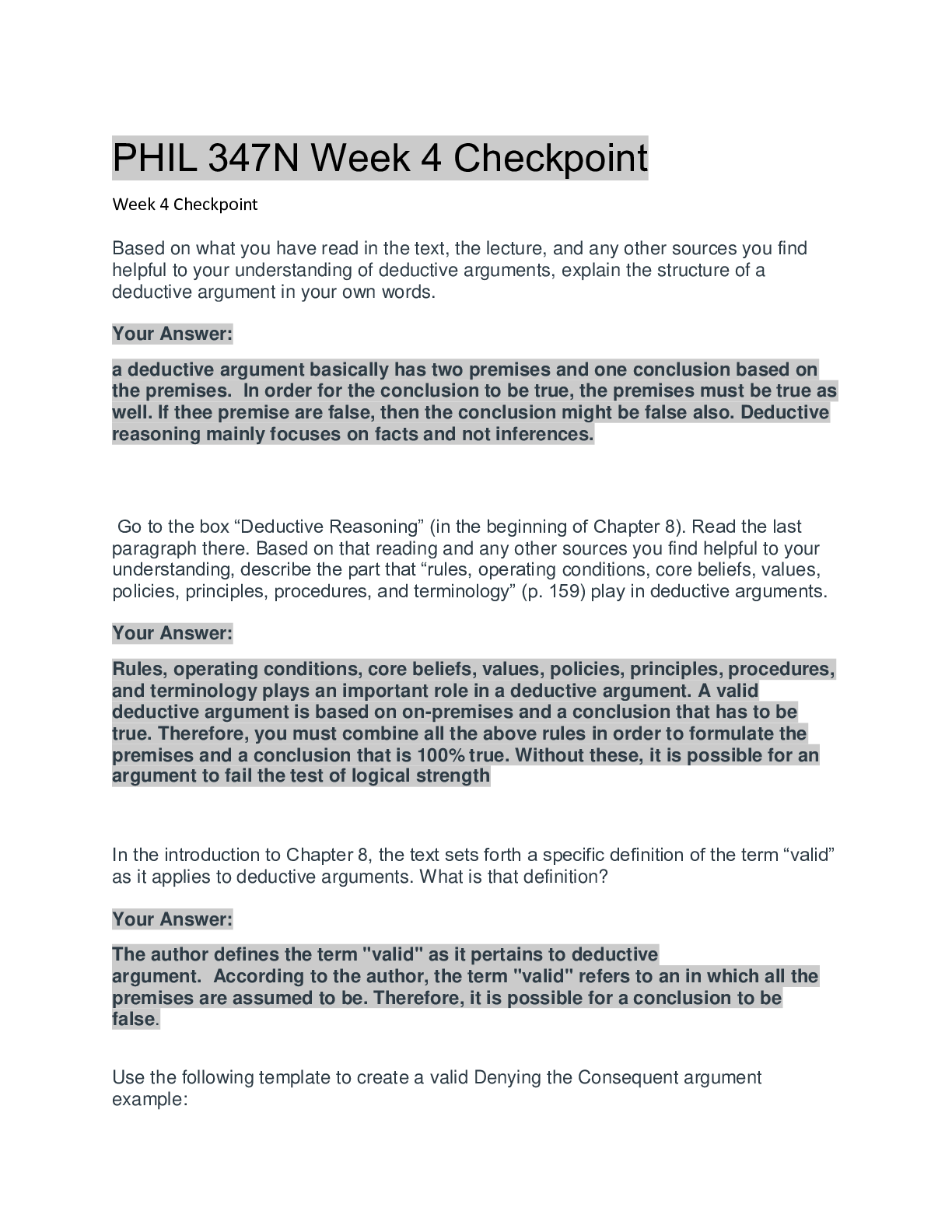
Buy this document to get the full access instantly
Instant Download Access after purchase
Add to cartInstant download
We Accept:

Reviews( 0 )
$10.00
Document information
Connected school, study & course
About the document
Uploaded On
Jan 28, 2021
Number of pages
6
Written in
Additional information
This document has been written for:
Uploaded
Jan 28, 2021
Downloads
0
Views
323

